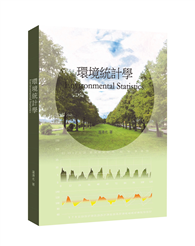If R&D and innovation in the 1990s were about more internationalization, more corporate entrepreneurship, and more information-integration, then the 2000s have been about consolidating and expanding these trends further: more globalization including the technology mavericks of China and India, more open and inbound innovation integrating external technology providers, and more web- and Intern- enabling of innovation processes by involving R&D contributors regardless of their location. The corporate R&D powerhouses of the 1980s are now mostly history. Even where they survived, they had to yield to corporate efficiency efforts and business-wide integration programs. Still, it would be unfair to belittle them in retrospect as they have found new roles in corporate R&D and innovation n- works. In fact, the very successes of centralized R&D organizations of the 1970s and 1980s made possible the revolution of globalized innovation that we have been witnessing since the 1990s. The first two editions of Managing Global Innovation, published in 1999 and 2000, were testimonials of an increasingly internationalizing world of innovation and R&D. In this third edition of Managing Global Innovation, we have retained the basic structure of two conceptual parts (I and II) and three case study parts (III, IV, V). However, we have greatly revised all chapters, including the final "Imp- cations" chapter (part VI), and incorporated new chapters and cases that illuminate and describe the recent trends in the context of the beginnings of global innovation in the 1980s and 1990s.
| FindBook |
有 1 項符合
Managing Global Innovation: Uncovering the Secrets of Future Competitiveness的圖書 |
 |
Managing Global Innovation: Uncovering the Secrets of Future Competitiveness 作者:Boutellier 出版社:Springer 出版日期:2014-11-02 語言:英文 規格:平裝 / 807頁 / 23.39 x 15.6 x 4.14 cm / 普通級/ 初版 |
| 圖書館借閱 |
| 國家圖書館 | 全國圖書書目資訊網 | 國立公共資訊圖書館 | 電子書服務平台 | MetaCat 跨館整合查詢 |
| 臺北市立圖書館 | 新北市立圖書館 | 基隆市公共圖書館 | 桃園市立圖書館 | 新竹縣公共圖書館 |
| 苗栗縣立圖書館 | 臺中市立圖書館 | 彰化縣公共圖書館 | 南投縣文化局 | 雲林縣公共圖書館 |
| 嘉義縣圖書館 | 臺南市立圖書館 | 高雄市立圖書館 | 屏東縣公共圖書館 | 宜蘭縣公共圖書館 |
| 花蓮縣文化局 | 臺東縣文化處 |
|
|
圖書介紹 - 資料來源:博客來 評分:
圖書名稱:Managing Global Innovation: Uncovering the Secrets of Future Competitiveness
|











